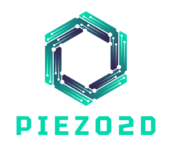Abstract:
Analytical calculations corroborated by the finite element modelling show that thin films of Van der Waals ferrielectrics covered by a 2D-semiconductor are promising candidates for the controllable reduction of the dielectric layer capacitance due to the negative capacitance (NC) effect emerging in the ferrielectric film. The NC state is conditioned by energy-degenerated poly-domain states of the ferrielectric polarization induced in the films under incomplete screening conditions in the presence of a dielectric layer. Calculations performed for the FET-type heterostructure „ferrielectric CuInP2S6 film – 2D-MoS2 single-layer – SiO2 dielectric layer” reveal the pronounced size effect of the multilayer capacitance. Derived analytical expressions for the electric polarization and multilayer capacitance allow to predict the thickness range of the dielectric layer and ferrielectric film for which the NC effect is the most pronounced in various Van der Waals ferrielectrics, and the corresponding subthreshold swing becomes much less than the Boltzmann’s limit. Obtained results can be useful for the size and temperature control of the NC effect in the steep-slope ferrielectric FETs.
Title: Size Effect of Negative Capacitance State and Subthreshold Swing in Van der Waals Ferrielectric Field-Effect Transistors
Authors: Anna N. Morozovska, Eugene A. Eliseev, Yulian M. Vysochanskii, Sergei V. Kalinin, and Maksym V. Strikha
Reference: arXiv:2406.13051 [cond-mat.mtrl-sci]

